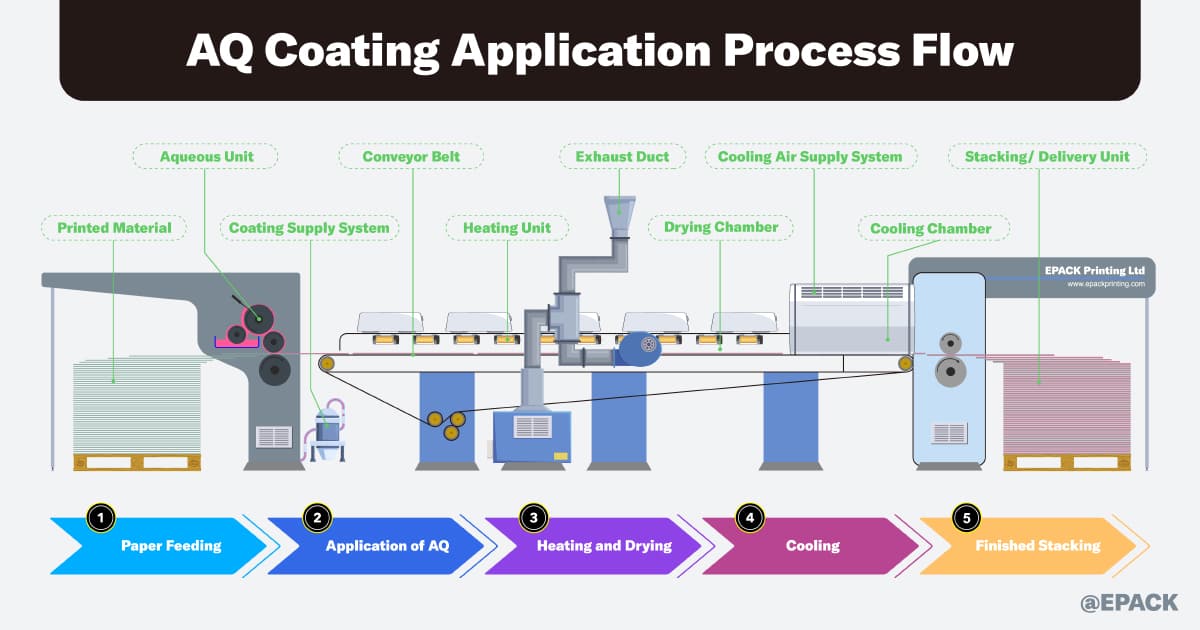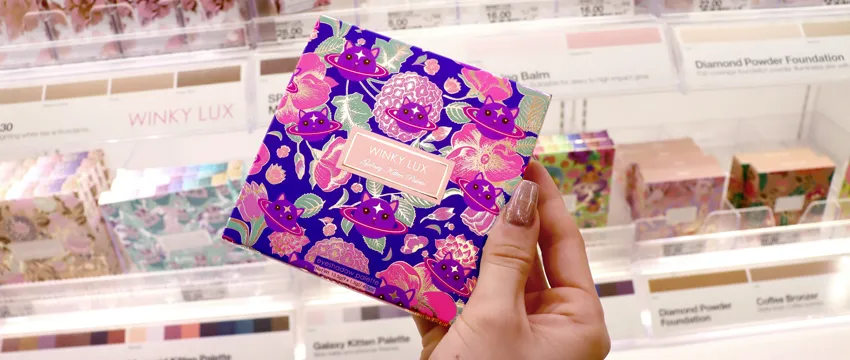How Does Aqueous Coated Paper Boost Retail Shelf Appeal?
How Does Aqueous Coated Paper Enhance Retail Packaging?
Aqueous coated paper is a versatile and widely used solution for enhancing the shelf appeal of retail packaging. It provides both aesthetic and functional benefits that help products stand out on store shelves and create a lasting impression on consumers. In this article, we will explore the definition and composition of aqueous coated paper, discuss its properties and characteristics, compare it with other coating technologies, and delve into the various benefits it offers in the context of retail packaging.
Definition and Composition of Aqueous Coated Paper
Aqueous coated paper is a clear, water-based varnish that is applied to paper and paperboard substrates to enhance their appearance and performance. It consists of a mixture of binders, pigments, and other additives that form a protective layer on the surface of the paper. This coating adds a glossy or matte finish to the paper, giving it a polished and professional look.
Properties and Characteristics
Aqueous coated paper possesses several properties and characteristics that make it an ideal choice for retail packaging:
-
Gloss and Matte Finishes: Aqueous coatings are available in glossy and matte finishes. The glossy finish adds shine and vibrancy to the printed graphics, while the matte finish provides a non-reflective, velvety appearance.
-
Quick Drying: Aqueous coatings dry rapidly, making them compatible with various printing techniques and ideal for packaging, brochures, magazines, labels, and stickers. This quick-drying feature allows for faster production times and shorter turnaround times.
-
Scuff and Smudge Resistance: The protective layer provided by aqueous coatings helps prevent scuffs and smudges from damaging the printed graphics. This ensures that the packaging retains its visual appeal even after handling and transportation.
Table 1: Aqueous Coated Paper Properties
| Property | Description |
|---|---|
| Gloss and Matte Finishes | Adds shine and vibrancy or non-reflective, velvety appearance |
| Quick Drying | Rapid drying compatible with various printing techniques |
| Scuff and Smudge Resistance | Protects against damage from scuffs and smudges |
-
Environmental Friendliness: Aqueous coatings have low volatile organic compounds (VOCs) emissions, making them a more environmentally friendly option compared to solvent-based coatings. They meet FDA regulations and are considered safe for food packaging.
-
Affordability: Aqueous coatings are a cost-effective solution for enhancing the appearance of packaging. They provide a high-quality finish at a lower cost compared to other coating options, such as lamination.
Comparison with Other Coatings (UV, Varnishes)
While aqueous coatings offer several advantages, it's essential to understand how they compare to other coating technologies, such as UV coatings and varnishes.
-
UV Coatings: UV coatings are cured using ultraviolet light, providing an instantaneous cure and a thin, protective layer. They come in various finishes, including gloss, satin, and matte. UV coatings create unique designs and effects with specific application methods, but they can be more expensive and have higher VOC emissions compared to aqueous coatings.
-
Varnishes: Varnishes are applied as an overprint and provide a protective layer with different finishes, including matte, satin, and gloss. They can be combined with other coatings, such as matte varnish with gloss varnish for contrast effects. Varnishes provide a more traditional look and feel but may not offer the same level of scuff and smudge resistance as aqueous coatings.
It's important to consider the specific requirements of your packaging and the desired appearance when choosing between aqueous coatings, UV coatings, and varnishes.
Historical Context of Coating Technologies
The use of coatings for enhancing the appearance and performance of printed materials has a long history. Early coatings included natural lacquer used by the Chinese and pitch, wax, and resins employed by the Greeks for waterproofing. Over time, different coating technologies have evolved, each with its own set of advantages and applications. Aqueous coatings, with their water-based composition and wide-ranging benefits, have become the most widely used coating solution in the printing and packaging industry.
Benefits of Aqueous Coatings in Retail Packaging
Aqueous coatings offer a range of benefits that contribute to the enhanced shelf appeal of retail packaging. These benefits can be broadly categorized into aesthetic enhancements and functional advantages. Let's explore each of these in detail.
Aesthetic Enhancements: Glossy and Matte Finishes
One of the primary benefits of aqueous coatings is their ability to enhance the visual appeal of packaging through glossy and matte finishes. These finishes add depth and dimension to the printed graphics, making them more vibrant and eye-catching.
Glossy Finish
Aqueous coatings with a glossy finish create a reflective surface that enhances the colors and graphics printed on the packaging. The glossy appearance gives the packaging a polished and professional look, making it stand out on store shelves. This finish is particularly effective for products that require high visibility and strong visual impact.
Matte Finish
On the other hand, aqueous coatings with a matte finish provide a non-reflective surface that absorbs light, giving the packaging a sophisticated and elegant appearance. The matte finish reduces glare and enhances the color intensity, making the printed graphics look rich and high-end. This finish is often preferred for luxury or premium products that aim to convey a sense of understated elegance.
Functional Advantages: Scuff and Smudge Resistance
In addition to their aesthetic enhancements, aqueous coatings also offer functional advantages that contribute to the overall quality and durability of retail packaging.
Scuff Resistance
The protective layer provided by aqueous coatings helps protect the printed graphics from scuffs and abrasions. This is especially important for products that are prone to handling, transportation, or shelf wear. The scuff resistance of aqueous coatings ensures that the packaging retains its visual appeal and looks pristine throughout its lifecycle.
Smudge Resistance
Aqueous coatings also provide smudge resistance, preventing fingerprints and other marks from affecting the appearance of the packaging. This is particularly beneficial for products that are frequently touched or handled by customers, such as cosmetics or personal care items. The smudge resistance ensures that the packaging looks clean and pristine, enhancing the overall consumer experience.
Table 2: Aqueous Coating Benefits
| Benefit | Description |
|---|---|
| Aesthetic Enhancements | Enhances the visual appeal of packaging with glossy or matte finishes |
| Scuff and Smudge Resistance | Protects against scuffs, abrasions, and fingerprints |
Case Studies: Successful Retail Packaging Applications
Several brands have effectively leveraged aqueous coatings to enhance the shelf appeal of their retail packaging. Let's take a look at a few case studies that showcase the benefits of using aqueous coated paper.
Case Study 1: XYZ Cosmetics
XYZ Cosmetics, a high-end beauty brand, wanted to create packaging that reflected the premium quality and elegance of their products. They opted for aqueous coated paper with a matte finish to achieve a sophisticated and understated look. The matte finish added depth and intensity to the printed graphics, making the packaging look luxurious and high-end. The scuff resistance of the aqueous coating ensured that the packaging maintained its pristine appearance even after being handled by customers. The use of aqueous coated paper significantly enhanced the shelf appeal of XYZ Cosmetics' products and contributed to increased sales.
Case Study 2: ABC Electronics
ABC Electronics, a leading consumer electronics company, wanted to create packaging that stood out on store shelves and grabbed customers' attention. They chose aqueous coated paper with a glossy finish to achieve a vibrant and eye-catching look. The glossy finish added shine and reflectivity to the printed graphics, making the packaging visually striking. The smudge resistance of the aqueous coating ensured that the packaging remained clean and free from fingerprints, even with frequent handling. The use of aqueous coated paper helped ABC Electronics create packaging that attracted customers and emphasized the quality and innovation of their products.
These case studies highlight the effectiveness of aqueous coatings in enhancing the shelf appeal of retail packaging. Whether it's creating a luxurious and high-end look or making the packaging visually striking and vibrant, aqueous coatings offer a range of possibilities for brands to make a lasting impression on consumers.
Environmental Implications and Eco-Friendliness
In addition to their aesthetic and functional benefits, aqueous coatings also have environmental implications and are considered an eco-friendly option for retail packaging. Let's explore the eco-friendliness of aqueous coatings and compare them to traditional lamination and solvent-based coatings.
Low VOC Emissions and Environmental Compliance
Aqueous coatings have low volatile organic compound (VOC) emissions, making them a more environmentally friendly alternative compared to solvent-based coatings. VOCs are chemicals that contribute to air pollution and have adverse health effects. By opting for aqueous coatings, brands can minimize their environmental impact and comply with regulations regarding VOC emissions.
Biodegradability and Sustainable Practices
Aqueous coatings are biodegradable and can be recycled, making them a sustainable choice for retail packaging. Unlike traditional lamination, which often involves plastic films that are challenging to recycle, aqueous coatings do not hinder the recyclability of paper and paperboard materials. This aligns with the growing demand for sustainable packaging solutions that minimize waste and promote a circular economy.
Comparison with Traditional Lamination and Solvent-Based Coatings
Traditional lamination involves the application of a plastic film to the surface of the paper or paperboard. While lamination provides a waterproof texture and offers enhanced protection, it can hinder the recyclability of the packaging. Aqueous coatings, on the other hand, do not introduce non-recyclable materials and retain the recyclability of the underlying paper or paperboard.
Solvent-based coatings, including varnishes and some UV coatings, often contain volatile organic compounds (VOCs) that can be harmful to the environment. By choosing aqueous coatings, brands can reduce their environmental footprint and opt for a more sustainable coating option.
When considering the environmental implications of retail packaging coatings, it's essential to prioritize eco-friendly practices and choose coatings that align with sustainability goals.
In summary, aqueous coated paper offers a range of benefits for enhancing the shelf appeal of retail packaging. Whether it's the aesthetic enhancements provided by glossy and matte finishes or the functional advantages of scuff and smudge resistance, aqueous coatings contribute to the overall quality and visual appeal of packaging. Additionally, their eco-friendly nature and compatibility with recycling make them a sustainable choice for brands looking to minimize their environmental footprint. By leveraging the advantages of aqueous coatings, brands can create packaging that stands out, attracts customers, and reinforces their brand image.
FAQs about How Aqueous Coated Paper Improves Shelf Appeal for Retail Packaging
What is aqueous coated paper?
Aqueous coated paper is a clear, water-based varnish applied to paper substrates to enhance appearance and performance, consisting of binders, pigments, and additives.
How does aqueous coated paper enhance retail packaging's appearance?
Aqueous coated paper enhances retail packaging's appearance by providing glossy or matte finishes that add vibrancy and depth to printed graphics, making them more eye-catching.
What functional benefits does aqueous coated paper offer?
Aqueous coated paper offers functional benefits such as quick drying, scuff and smudge resistance, making it durable during handling and transportation.
How does aqueous coated paper compare to UV coatings and varnishes?
Aqueous coatings have lower VOC emissions and cost compared to UV coatings, while offering better resistance properties than traditional varnishes, making them a more eco-friendly and cost-effective option.
What environmental advantages does aqueous coated paper provide?
Aqueous coatings produce low VOC emissions, are biodegradable, and do not compromise recyclability, making them an environmentally friendly choice for packaging.
Aqueous coated paper transforms retail packaging with superior sheen, protection, and eco-friendliness. From glossy vibrancy to durable finishes, it enhances product appeal while being kind to the environment. Choosing the right coating depends on your budget, packaging type, and sustainability goals. Unlike UV and lamination coatings, aqueous options offer balance in cost and performance. It supports high brand recognition and consumer trust. Make decisions that fit your brand’s needs, and let aqueous coatings set you apart in the competitive retail space.





